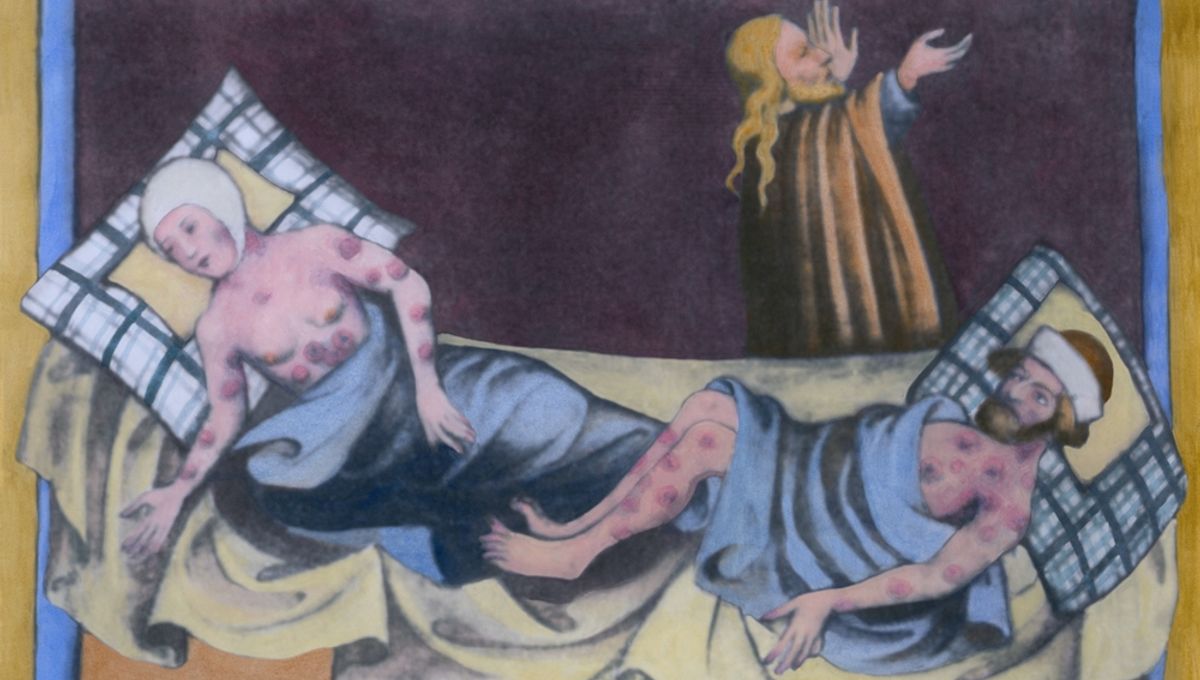
What was the worst time in history to be a human? You could put forward the case that the 20th century was pretty awful, considering it had two world wars and one of the worst pandemics in history. The 17th century was certainly no joke either, and the year 563 CE was pretty dire. But of all the miserable times to live, you have to spare some sympathy for the poor souls who suffered through the 14th century.
The most infamous event of this horrific century is the Black Death, the notorious bubonic plague pandemic that tore through Western Eurasia and North Africa from 1347 to 1351, continued to rumble on for decades, and still haunts our immune systems today.
Bubonic plague is now easily treated, but in the time before antibiotics, it was an extremely unpleasant disease. It begins with the usual symptoms of a red hot fever, headache, chills, and weakness. As the disease progresses, the bacteria multiply in the lymph node near where the bacteria entered the human body, causing it to become inflamed and painful. Eventually, the inflamed lymph nodes can turn into open sores, oozing with pus. Left untreated, it’s almost always fatal.
Millions of people suffered this unfortunate fate in the 14th century. The Black Death’s death toll is still fiercely debated, but conservative estimates say it killed at least 25 million people in Europe, around half of the continent’s population. Some estimates go way higher, arguing it killed around 200 million people.
The Black Death was just one of the horrific events that unfolded in the 14th century, however. Prior to the plague, Europe was struck down by the Great Flood and Great Famine of 1315–1317.
It is said to have rained almost constantly throughout the summer and autumn of 1314 to 1316. Along with creating a dreary ambiance, the weather caused crops to rot in the ground, resulting in mass shortages of food.
Things quickly turned sour. By 1316, there were reports of people murdering each other for food, parents abandoning their children, pet eating, and cannibalism. Not even newborn babies were off the menu.
Once again, estimates of the death toll vary, but it’s a solid bet to say 5 to 12 percent of the population of northern Europe died from starvation or related disease.
These events helped lead the way to what historians like to call the Crisis of the Late Middle Ages. Europe had been dealt a terrible hand in the first half of the 14th century and had undergone a radical social shift due to the sudden demographic changes sparked by the Black Death. Fairly understandably, the people of Europe were angry, lost, and shaken.
Spawned by decades of famine, economic upset, and disease, colossal instability shook up the contingent. Peasants revolted across the European countryside, while riots broke out in many of its cities.
Amongst this turmoil, wars also become endemic in Europe, the best-known of which was the Hundred Years’ War between the kingdoms of England and France from 1337 to 1453. It’s hard to know how many people died during this war since so many other deadly events were occurring simultaneously, but historians believe between 2.3-3.3 million people were killed.
The 21st century often feels like “the end times”, and while we’ve undoubtedly got some big problems on our hands – climate change, ecological decay, chronic inequality, one of the most devastating pandemics on record, and red-hot geopolitical tensions – remember, if we could survive the 14th century, we can survive this.
Source Link: The 14th Century Was An Utterly Horrific Time To Be A Human